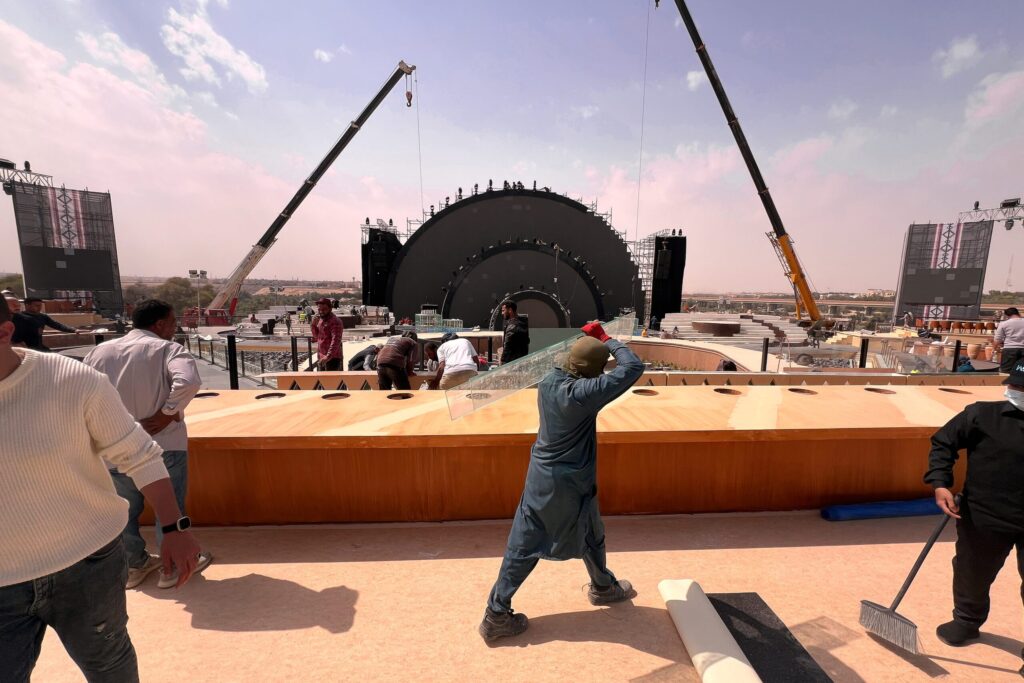
Jaap Arriens/NurPhoto via Reuters Connect
Alternative funding model used across GCC
Banks paid a premium for higher risk
Early refinancing becoming more common
Contrasting trends are emerging in Gulf project finance, with deals increasing in duration but also more likely to be refinanced early.
Project finance is a funding model often used for infrastructure, in which repayment comes from revenue generated by the completed facility rather than being guaranteed by the owners.
“Repayment depends on the project succeeding,” says Rahul Bajaj, director of Mena equity research at Citi in Dubai.
As such, banks expect a premium for accepting the higher risk. “These are usually not low-margin products,” adds Bajaj.
The project finance model is expected to play a bigger role in supporting the Gulf’s economic development. As governments push ahead with mega-projects, especially in Saudi Arabia and the UAE, the need for alternative financing mechanisms has grown, bankers say.
Some recent large-scale projects – particularly in infrastructure and renewable energy – have secured project finance with contracts lasting more than 20 years, says Abbas Hussein, global head of infrastructure and development finance at Standard Chartered.
It usually takes about 25 years to repay a project finance contract, but lenders often offer better-value deals when the duration is about 12 years – in order to help meet industry rules on how much capital banks must hold.
Project owners – also known as sponsors – are increasingly interested in these deals too, according to Hussein. Many want to obtain short-term bank financing first ahead of a longer-term refinancing via bonds or structures backed by export credit agencies, he says.
To get the best terms, they tend to seek to refinance the debt once the project is built and has been operational for a few years – which typically amounts to seven to eight years, says Stephen Knight, a partner at Dentons law firm in Abu Dhabi.
“If project sponsors wait longer, there is a risk that the refinancing becomes more expensive – it may be that there’s a reason why the refinancing has not happened sooner or it could be a view around future interest rates,” says Knight.
 Supplied
SuppliedThe refinancing can take the form of a new project finance deal, bonds or a mix of bonds and bank loans, according to Knight.
“The banks are taking a 25-year risk on the project’s revenue stream and a 25-year interest rate risk,” says Knight. “Banks will typically insist on there being a long-term interest rate hedge at the outset.
“So, when it comes to a refinancing, deciding whether to break the hedge – which may be necessary if refinancing is with a different group of lenders or if the debt is to be converted into a fixed rate product like a bond – is a fundamental consideration.”
There is also growing use of so-called alternative liquidity pools. These include development finance institutions, export credit agencies, specialist infrastructure funds and capital markets, alongside traditional bank lending.
For lenders, “well-structured project financing offers long-term, asset-backed lending with strong cash flow visibility”, says Hussein.
GCC banks are the main bankrollers of project finance deals in the six-nation bloc.
“They have different liquidity constraints, are able to accept the risk allocation more easily and may have deeper regional relationships,” says Knight.
For international banks, it tends to be harder from compliance, pricing and risk allocation perspectives, making it more challenging for them to be as competitive, he says.
Banks participating in an initial project financing may seek to sell their portion in the secondary market.
“The main risks to banks being repaid relate to the project’s revenue not being as much as planned, for example, if the construction is delayed or over budget,” Knight says.
The margin, or premium, banks charge versus prevailing interest rates for participating in project finance deals have generally reduced over the past 15 years.
“Banks are more comfortable with the risk allocation in the region and there has tended to be greater liquidity,” Knight adds.



